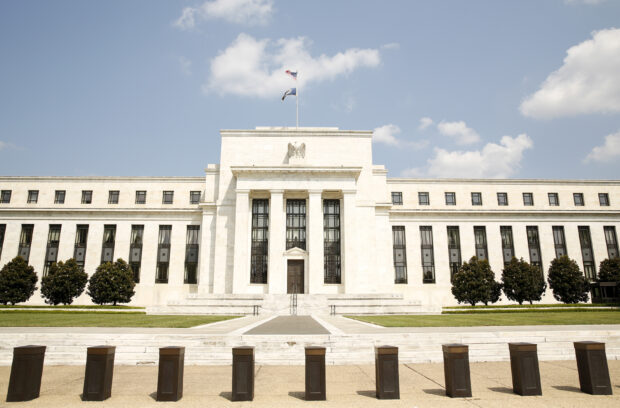Fed worried about cutting rates too soon, minutes of Jan meeting show

The Federal Reserve building in Washington September 1, 2015. REUTERS/Kevin Lamarque/File photo
WASHINGTON —The bulk of policymakers at the Federal Reserve’s last meeting were concerned about the risks of cutting interest rates too soon, with broad uncertainty about how long borrowing costs should remain at their current level, according to the minutes of the Jan. 30-31 session.
“Participants highlighted the uncertainty associated with how long a restrictive monetary policy stance would need to be maintained” to return inflation to the U.S. central bank’s 2 percent target, said the minutes, which were released on Wednesday.
Whereas “most participants noted the risks of moving too quickly to ease the stance of policy,” only “a couple … pointed to downside risks to the economy associated with maintaining an overly restrictive stance for too long.”
U.S. stocks were trading lower following the release of the minutes before recovering ground later in the session, while the U.S. dollar was little changed against a basket of currencies. U.S. Treasury yields rose.
The minutes seemed to reinforce the recent message of Fed policymakers that they would be in no hurry to deliver on rate cuts that officials still expect to begin sometime this year.
Persistent inflation
In comments aired earlier on Wednesday on SiriusXM, Richmond Fed President Thomas Barkin cited concerns about persistent inflation for service industries and housing, and said data released since the central bank’s last meeting, showing strong job growth and stronger inflation than anticipated, made any rate-cut call “harder.”
“It definitely did not make things easier. It made things harder,” Barkin said.
READ: Rents boost US consumer prices in Jan
Top U.S. central bank officials, including Fed Vice Chair Philip Jefferson and Fed Governors Lisa Cook and Christopher Waller, may help further sketch out how the recent data may influence the discussion about possible rate cuts when they speak on Thursday.
“It is clear that the message from the minutes, coupled with Fed speakers out in force, is that they are concerned about moving too quickly, before they declare a final victory in quelling inflation. Given the uptick in prices, the Fed’s concerns appear valid,” said Quincy Krosby, chief global strategist at LPL Financial.
Data released last week showed underlying, or “core,” consumer inflation remained unchanged at 3.9 percent annually, led by rising prices for housing.
While Fed officials say they are confident the central bank’s policy rate can be lowered later this year from the 5.25 percent-5.5 percent range maintained since July, the Jan. 31 policy statement was explicit about the need for “greater confidence” in falling inflation before rate cuts can commence.
‘Notable’ risks
The minutes cited concerns among “some” Fed officials that progress on inflation could outright stall if the economy continues to perform as strongly as it has, while Fed staff suggested some weak points in an economy policymakers like to characterize as unnaturally resilient – with growth above potential and an historically low 3.7 percent unemployment rate.
In presentations to policymakers, Fed staff took note of a variety of risks, from “notable” vulnerabilities in the U.S. financial system, including falling commercial real estate prices, to the possibility that “reducing inflation could take longer than expected,” the minutes said.
That, in turn, might “slow the pace of real activity” more than expected.
READ: Fed seen cutting US rates in June, risks skewed toward later move
After the publication of the minutes, investors in contracts tied to the Fed’s benchmark overnight interest rate continued to see the central bank beginning to reduce borrowing costs in June.
The minutes also noted upcoming decisions on when and how to stop reducing the size of the Fed’s balance sheet, with “many participants” suggesting a start to “in-depth” discussions on balance sheet policy at the March policy meeting.
Mixed picture
The rapid easing in financial conditions during the fourth quarter, after the Fed began signaling that its rate hikes were likely over, had largely run its course by the time officials gathered at the end of January.
Since then, the picture has been mixed: Treasury yields have increased by more than a quarter of a percentage point, bringing an end for the time being to a decline in consumer and corporate borrowing costs, but stocks have continued to march to record highs.
Given what seemed to be falling inflation on the horizon, Ryan Sweet, chief U.S. economist at Oxford Economics, said the concern of Fed policymakers about cutting rates too soon “seems odd,” and suggested that risks may be tilting towards overly tight policy beginning to weigh on the economy.
“If the central bank waits for clear signs that the labor market, or the broader economy, is deteriorating, they will be behind the curve,” Sweet wrote. “This could turn a ‘soft landing’ into a bumpier one.”